Tomatoes are a popular summertime garden crop. But tomatoes can be grown year-round using hydroponics. Hydroponics was actually used in ancient Babylon to create hanging gardens. Modern understanding of this ancient method allows growers to yield more results, faster, with fewer resources.
The concept of hydroponics involves growing plants without the use of soil. The soil is substituted for other media such as rockwool, coconut fiber, perlite, or lightweight expanded clay aggregate. A nutrient solution is added to the water to feed the plants.
Replacing the soil with another media does not provide the plant with nutrients. A nutrient solution is added to feed the plants.
Soil harbors soil-borne diseases and invading weeds.
By incorporating hydroponics and using alternative media to grow the plants, these risks can be mitigated.
Check out our complete overview of hydroponics.
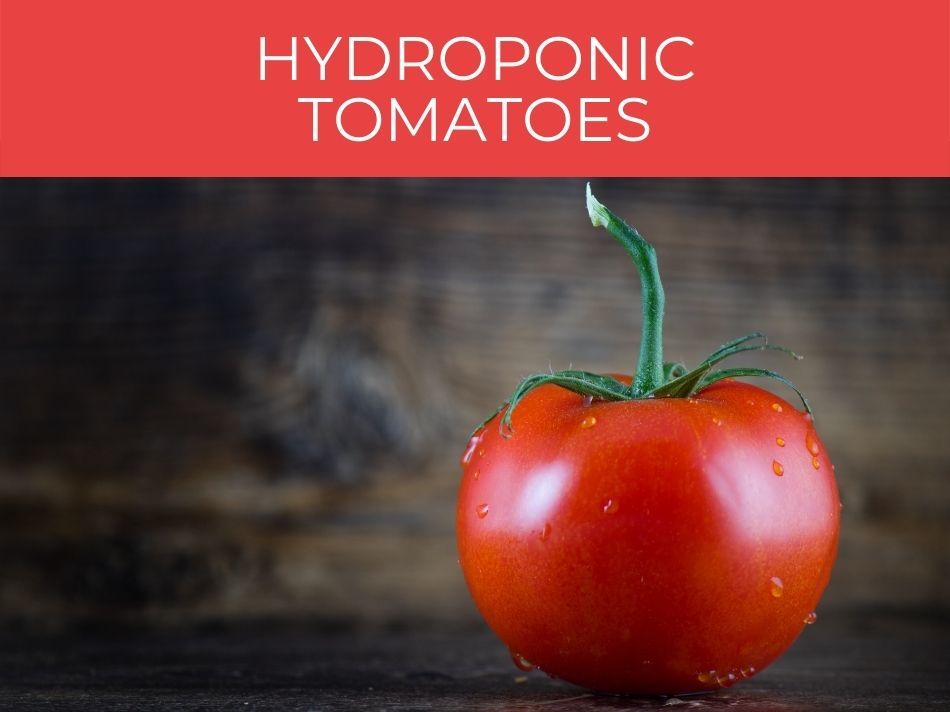
Hydroponic tomatoes
Tomatoes are one of the most popular types of vegetables/plants grown using this technique.
Apart from the ability to yield more tomatoes in one growth cycle, tomatoes grown using hydroponics can yield results within 60 days from planting the seeds, whereas traditionally grown tomatoes can take up to 100 days to grow.
Hydroponic tomatoes are grown in a nutrient solution instead of soil. The nutrient solution contains a mixture of concentrated minerals that nourish the plant, ideally with a pH between 6.0 – 6.8. In addition, tomatoes can be grown year-round indoors using artificial lighting.
Tomatoes require different nutrients at each stage of their growth cycle.
The nutrients are obtained from the nutrient solution. Therefore, the grower needs to be very familiar with the different types of nutrients and their ratios.
Find out if it’s possible to anything grow with hydroponics.
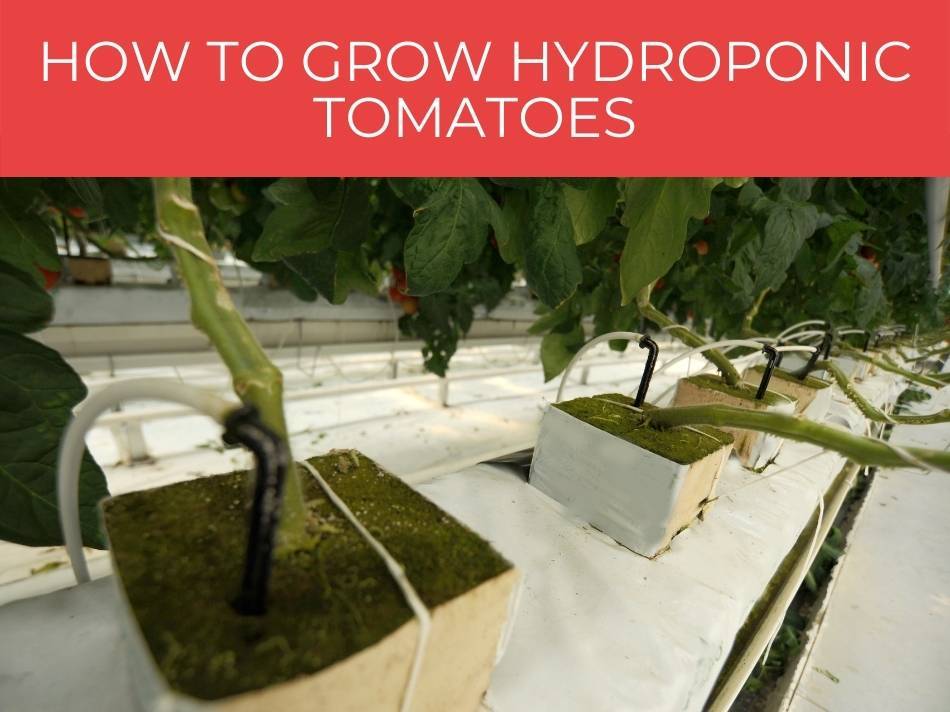
How to grow hydroponic tomatoes
Before you start, you should decide which hydroponic system and which growing medium you will use to grow your tomatoes, as well as select the right nutrient mix.
Furthermore, you need to prepare the space where the tomatoes will grow and select the appropriate lighting for your plants as they will require as much as 16 – 18 hours of lighting per day.
Hydroponic tomatoes can be grown using hydroponics in growing medium such as rock wool. Drip feed the roots with water & nutrient mixture at a pH between 6.0 – 6.8. Tomatoes require 16-18 hours of light to produce fruit. Monitor the pH and regulate the temperature.
Help the plants through growth by attaching the stem to a stake and regularly pruning the plants.
Change the nutrient solution often, essentially once a week, and leach the roots with water to prevent salt build-up.
Check out the best vegetables to grow with hydroponics.
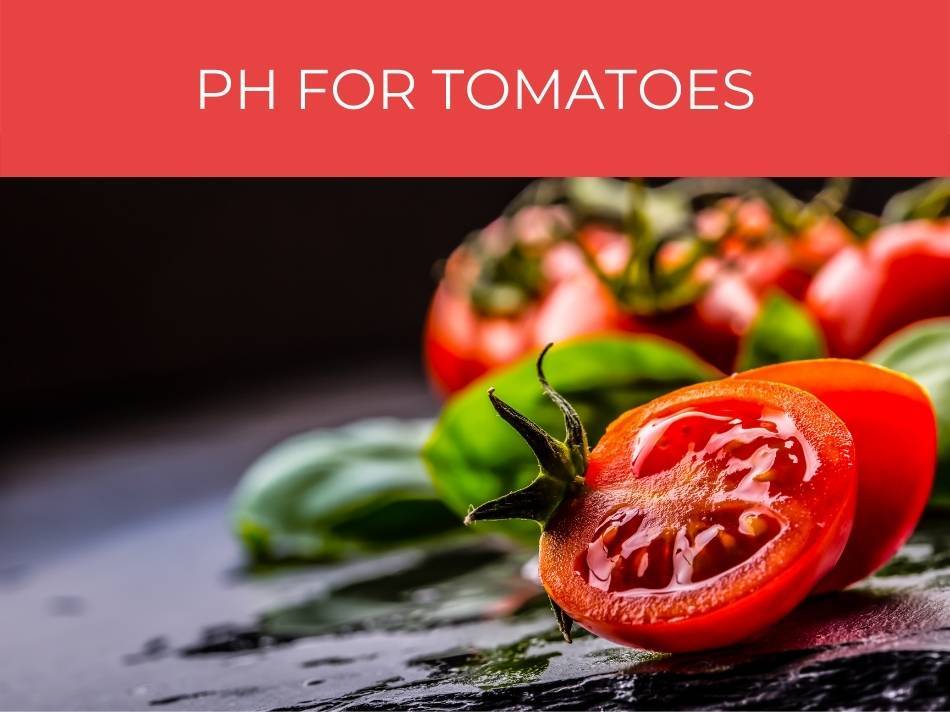
pH for tomatoes
There is a difference in the pH balance requirements of plants grown using traditional methods versus plants grown using hydroponics.
Essentially, hydroponic tomatoes grow much better in more acidic conditions.
The pH balance should be tested every three days.
Hydroponic tomatoes grow best at a pH of 6.0 – 6.8. The pH balance is essential to ensure the health and vitality of the tomatoes, & optimal nutrient absorption. If the pH balance is off, the tomatoes will be unable to take in the essential nutrients and micro-nutrients from the nutrient mix.
The water can be tested every three days using a pH strip, a digital pH pen, or a pH liquid solution testing kit.
The ideal pH for tomatoes is 6.0 – 6.8; higher than 7 prevents optimal nutrient absorption.
The pH balance can be adjusted by adding a small amount of pH-lowering product to the water and mixing it through.
See how you can keep tomatoes alive over winter.
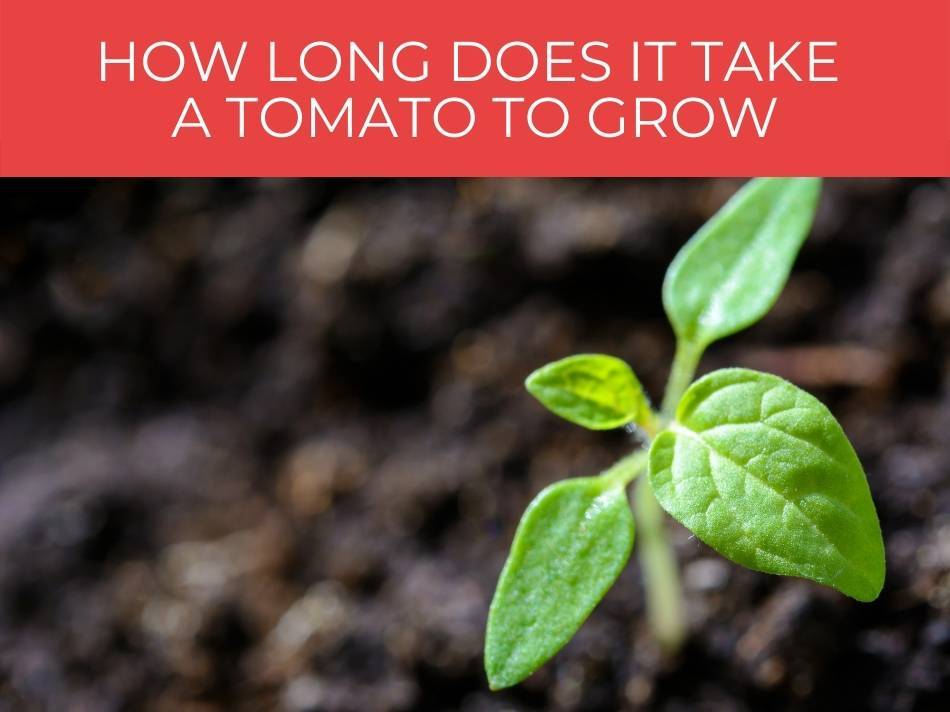
How long does it take a tomato to grow
Tomatoes that are grown in soil may take longer to mature than tomatoes grown using hydroponics.
In both cases, several factors will influence the growth rate of the plants.
Depending on the variety, traditionally-grown tomatoes can take 60 to more than 100 days to harvest. Hydroponic tomatoes, on the other hand, can be often harvested within 60 days of planting the seeds, if given 16-18 hours of light per day, & pH between 6.0 – 6.8.
Hydroponic tomato seedlings can germinate in five to ten days and rapid growth follows after four to six weeks.
Hydroponic plants grow much faster due to having much more control over the environment and the fact that the roots are literally bathing in nutrients, making absorption that much faster.
Find out our best tricks for growing more tomatoes.
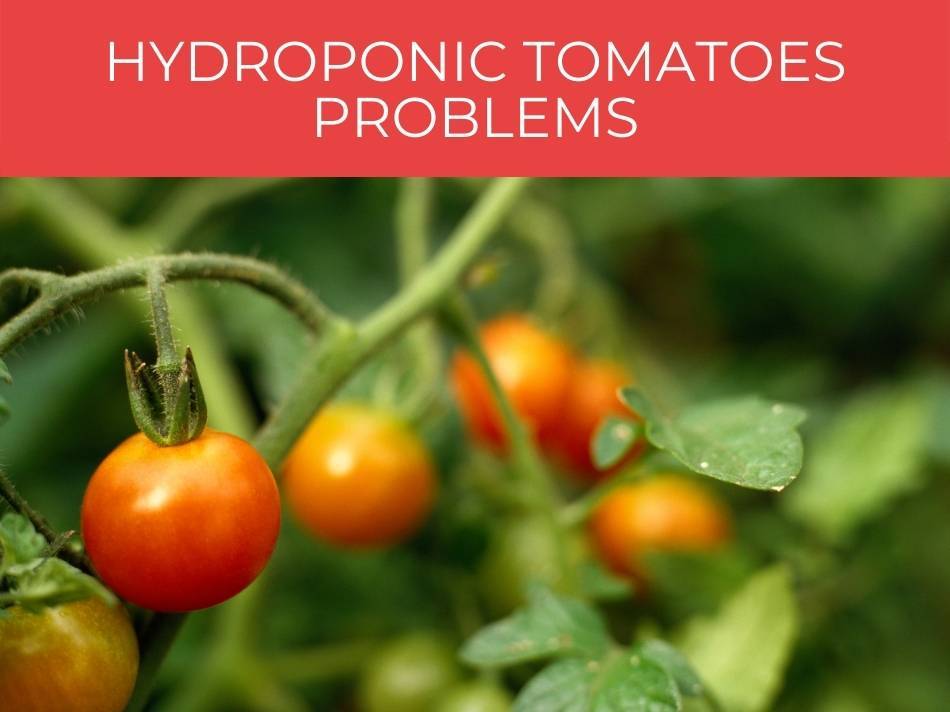
Hydroponic tomatoes problems
Your hydroponic tomatoes may wilt and die, the fruits may develop yellow spots, the plant may develop fruit that is not fully ripe or is discolored, or the top foliage may become twisted and cupped.
These are all signs that there are problems with your plants as a result of the hydroponic system.
Common hydroponic tomato problems include excess humidity, temperature extremes, insufficient lighting, poor pollination, or having insufficient day-night temperature drop. In addition, the nutrient mix may be lacking some key nutrients. A pH of 6.0 – 6.8 ensures optimal nutrient absorption.
Check for an insect infestation. If one cannot be detected, problems may be a result of poor growing conditions.
Check the climate, ventilation, lighting, and nutrient system.
If you notice a slimy, green, black, gray, or white coating on the plants or medium, then you have a fungus or mold problem.
Hydroponics versus soil: What are the differences?
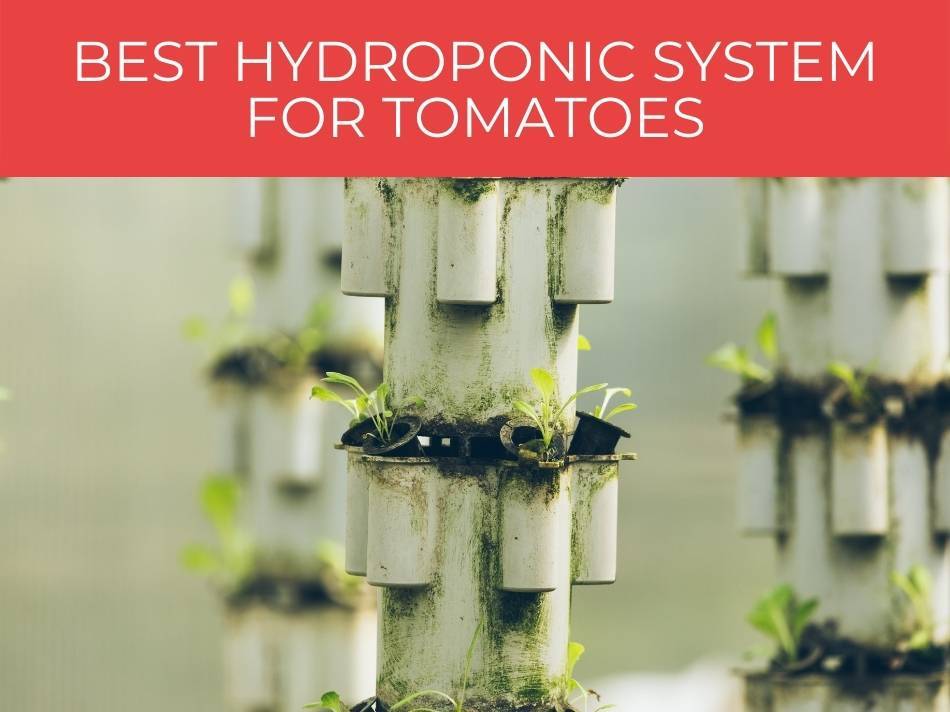
Best hydroponic system for tomatoes
There are several types of hydroponic systems that will be effective at growing hydroponic tomatoes.
The choice will come down to two factors: how big you would like your garden to be and how big your budget is.
The 2 hydroponic systems that work best for growing hydroponic tomatoes are the ebb & flow system, & the hydroponic drip system. The ebb & flow system floods the grow tray & feeds plants from below; the drip tray system feeds plants from above via a drip system.
Both systems are suited for beginner growers as well as commercial growers.
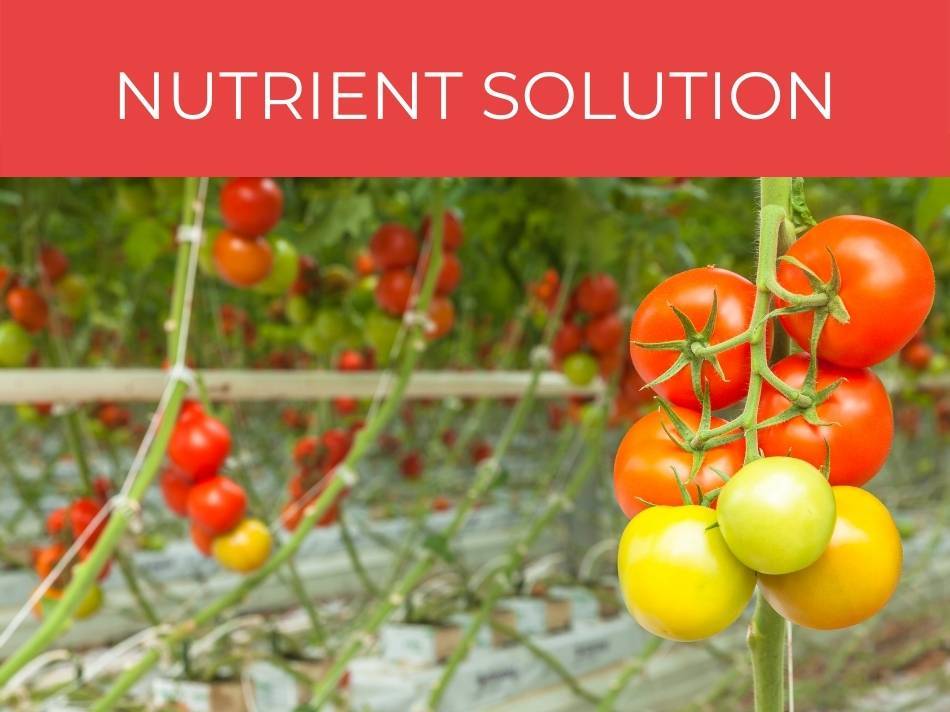
Nutrient solution
Nutrients are essential to the growth of plants and, as there is no soil for hydroponic growth, the plants will need to get these nutrients from somewhere else.
Nutrient solutions are a concentrated mix of the necessary minerals that plants require in order to grow.
Nutrient solutions are fertilizers that provide the primary nutrients needed by plants in a hydroponic system. These solutions contain a carefully proportioned mix of minerals that feed the plants during the growth phase.
There are different types of nutrient solutions that offer varying combinations of minerals.
Some nutrient solutions promote growth while others promote blooming. There are specific nutrients for growing hydroponic tomatoes.
It is crucial to know your nutrient needs as they come in one part, two part, and three part solutions.
Check out our complete guide to nutrient solutions.
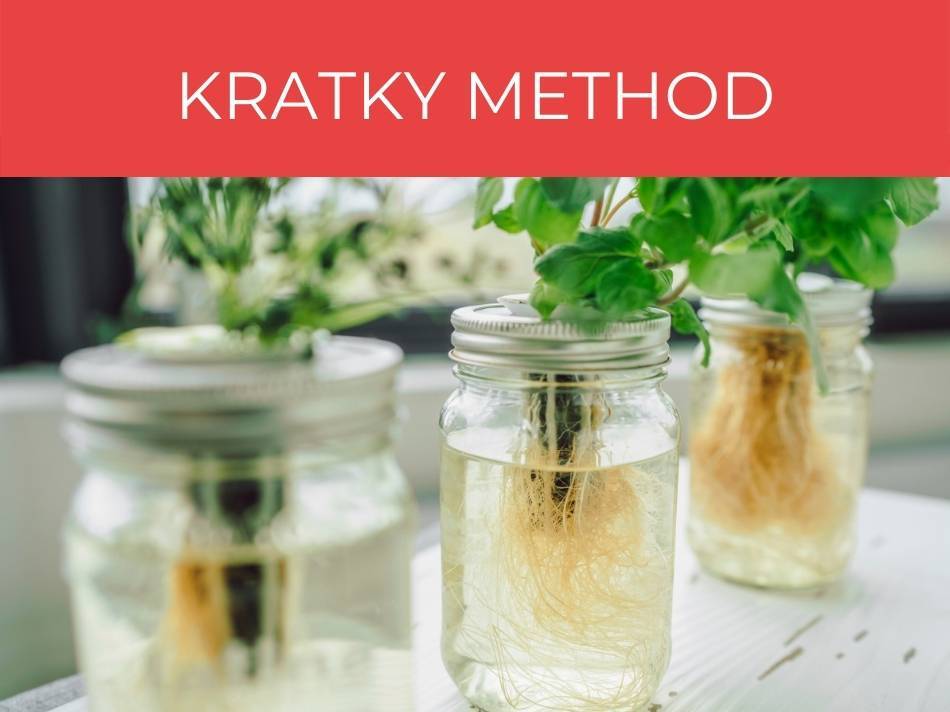
Kratky method
The kratky method is a technique used for growing plants, vegetables, and herbs using hydroponics.
It has gained popularity amongst home growers as it can be incorporated on a small scale using mason jars or buckets.
The Kratky method is a simple hydroponic growing method. Plants are suspended in a water & nutrient solution. As the plants grow, the water level drops; this creates air space for the plants to breathe. The more the plant grows, the more water is used, until the plant is ready to harvest.
This is a form of passive hydroponics.
The water does not need to be changed and oxygen is not a concern as plants have sufficient oxygen.
The water and nutrients for the entire growth cycle of the plant must be calculated at the start of the cycle.


